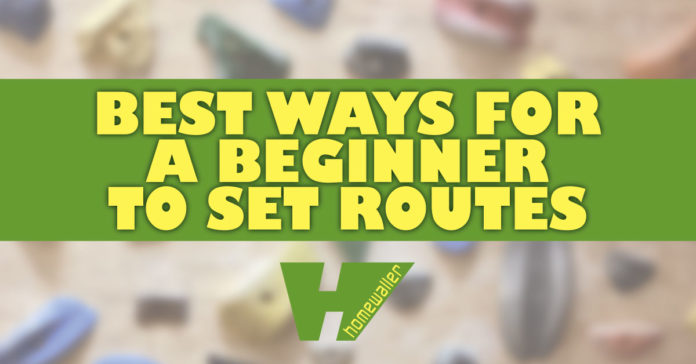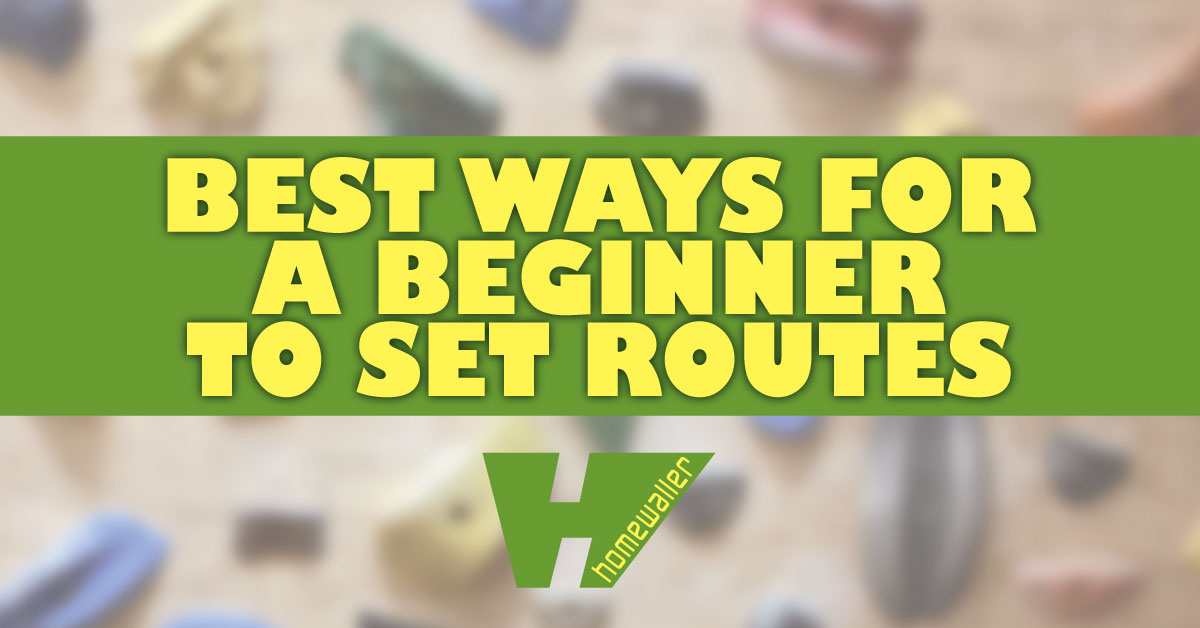
Okay, you’ve built your wall, now comes the fun! Routesetting can be very rewarding, but it’s also challenging for beginners to create routes for themselves and others. It’s a creative process that takes practice.
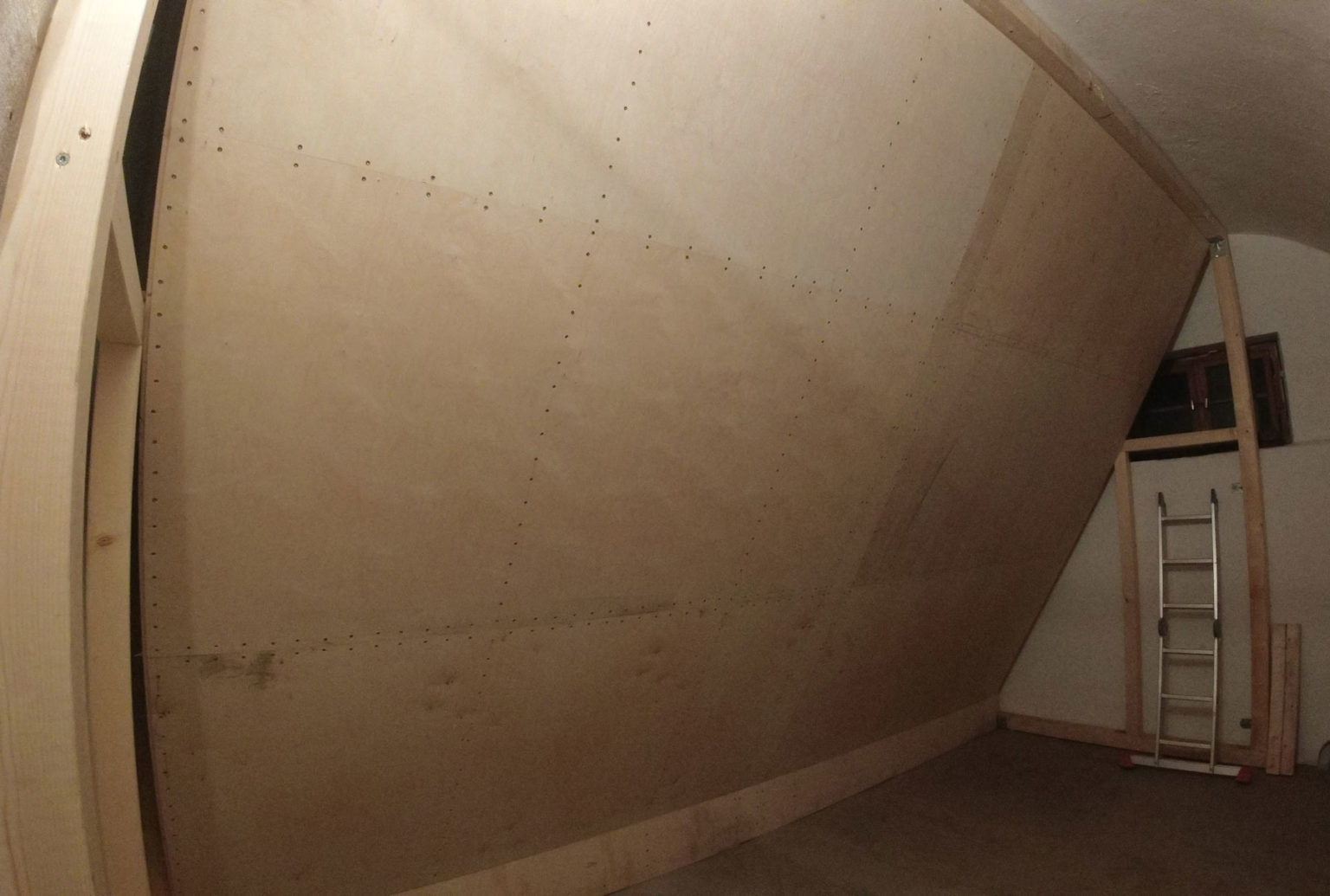
Involve other people. Friends who routeset with you will become more invested in the project, creating a community that uses the wall frequently. Throw a setting party! Getting and giving feedback in a group with varied body types and abilities will ensure the routes are well-rounded, with diverse styles that don’t just cater to you. Watching different people interpret your routes is one of the best ways to improve your setting skills.
Seek inspiration. There is no shortage of YouTube and Instagram videos from climbers that post movements from their homewalls, gyms or competitions. Watch them and try to mimic what you see. Don’t be afraid to invite a local routesetter from your gym to visit for a session to have fun and provide feedback. A few other ways to get inspiration and learn the craft of setting:
- Purchase Louie Anderson’s book Fundamentals of Routesetting, to learn from a veteran
- Participate in our Homewall Setting Challenge, a partnership with Routesetting Institute
- Crowdsource routes through an app like Stōkt or Retro Flash
Ready to begin attaching holds now? There are basically two ways to organize your routesetting:
- Spray walls – these walls are covered with holds and you pick your routes from the available holds.
- Routes – like most gyms, these walls typically have fewer holds with specific options tailored to your needs

First place the largest holds and volumes, regardless of whether you are setting routes or a spraywall. These take a lot of space and will alter the surface of the wall, effectively blocking off some surrounding areas. By starting with the largest features you can then place other holds which work well around them.
Option 1: Setting up your spray wall
At first it may seem filling the wall with all of your holds would be the most efficient way to set routes. While that can be true, it also takes some planning and awareness to create a great spray wall with varied movement and holds. Nonetheless, if your focus is to spend your time climbing more than setting, a spray wall is probably the best option for you.
Begin with a jug circuit. Set them in a circle around the perimeter of the wall, and if you have space with an “X” through the middle. This will give you a nice warmup, and also provide some starting and finishing holds to work with. Jugs also tend to be among the larger holds on a homewall, so putting them up first―in addition to other large holds and volumes―will make sure they don’t block off smaller holds.
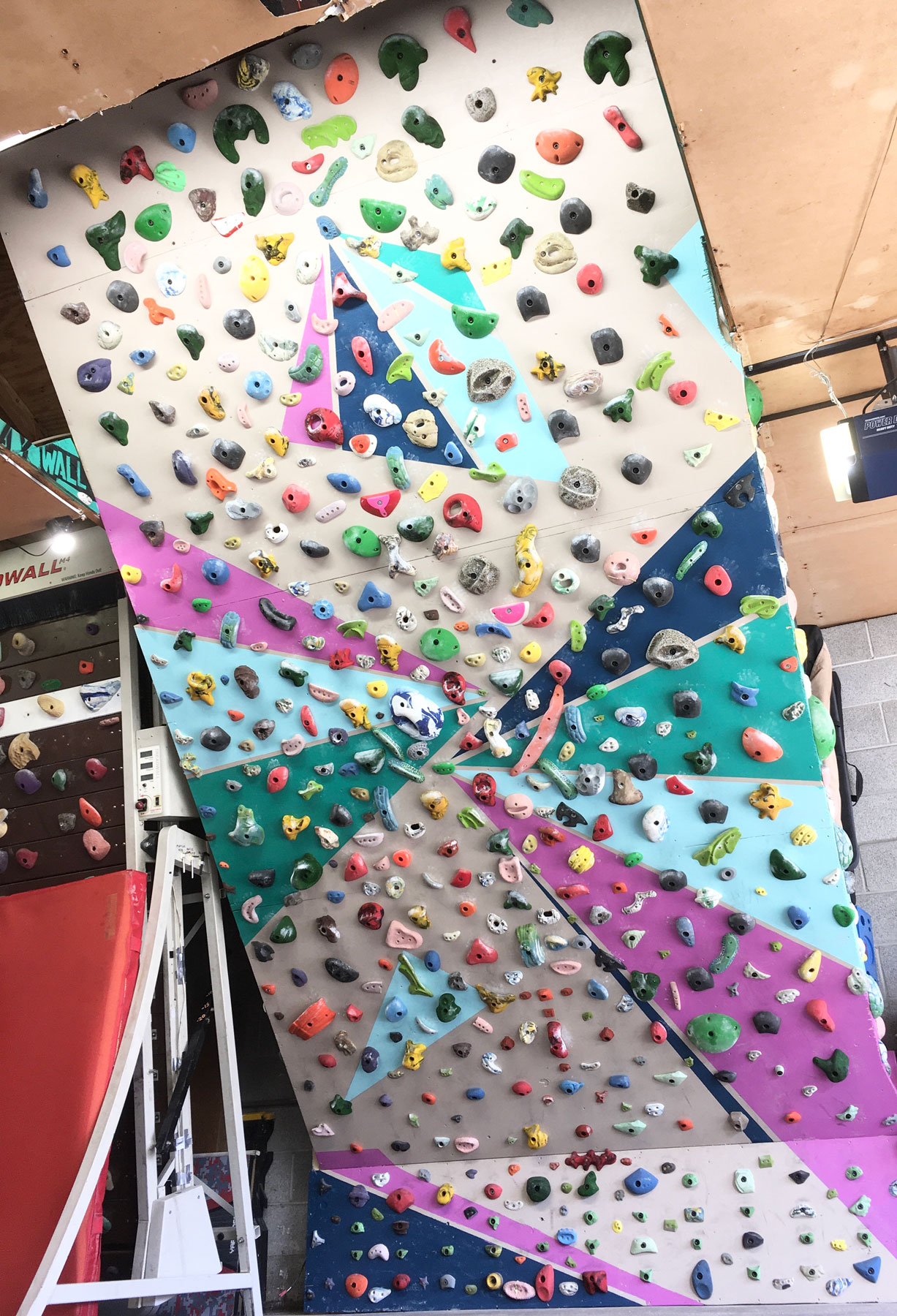
Distribute your holds evenly across the wall. Jackie advises to “spread the holds around so if you are moving off of one type of hold, you’ll be able to reach another similar type of hold, and don’t forget to spin them to different angles for variety.” Distribute each style of hold―crimps, pinches, pockets, slopers, jugs―so that, wherever you reach, you will have at least one available to grab. Good variety, spaced out, is the way to go here.
Before putting away the wrench, sample the spread. Start at the bottom or edges of your wall, and climb or envision sequences up or across. Are there any gaps? Do you have good variety wherever you would reach? Of course you can always swap or spin holds later, but if you spend the time on the front end, it will maximize your climbing time later.
Use foothold rules to expand your options. Make climbs harder or easier based on the foothold choices. House rules may include: open feet (use anything), open jibs (use any screw-ons), tracking (use only the handholds), natural tracking (sidewalls and permanent features plus the handholds), or anything else you can contrive.
Option 2: Setting specific routes
Setting standalone routes is a different thing entirely than a spray wall although, as you fill your wall in with routes, variations and new options will open up. The approach you take to setting specific routes is pretty much the same as what commercial routesetters do every day in gyms and at comps. It’s a highly nuanced artform that at the highest levels can take many years to master. Good thing you’re not setting to determine the winner in a field of Olympians.
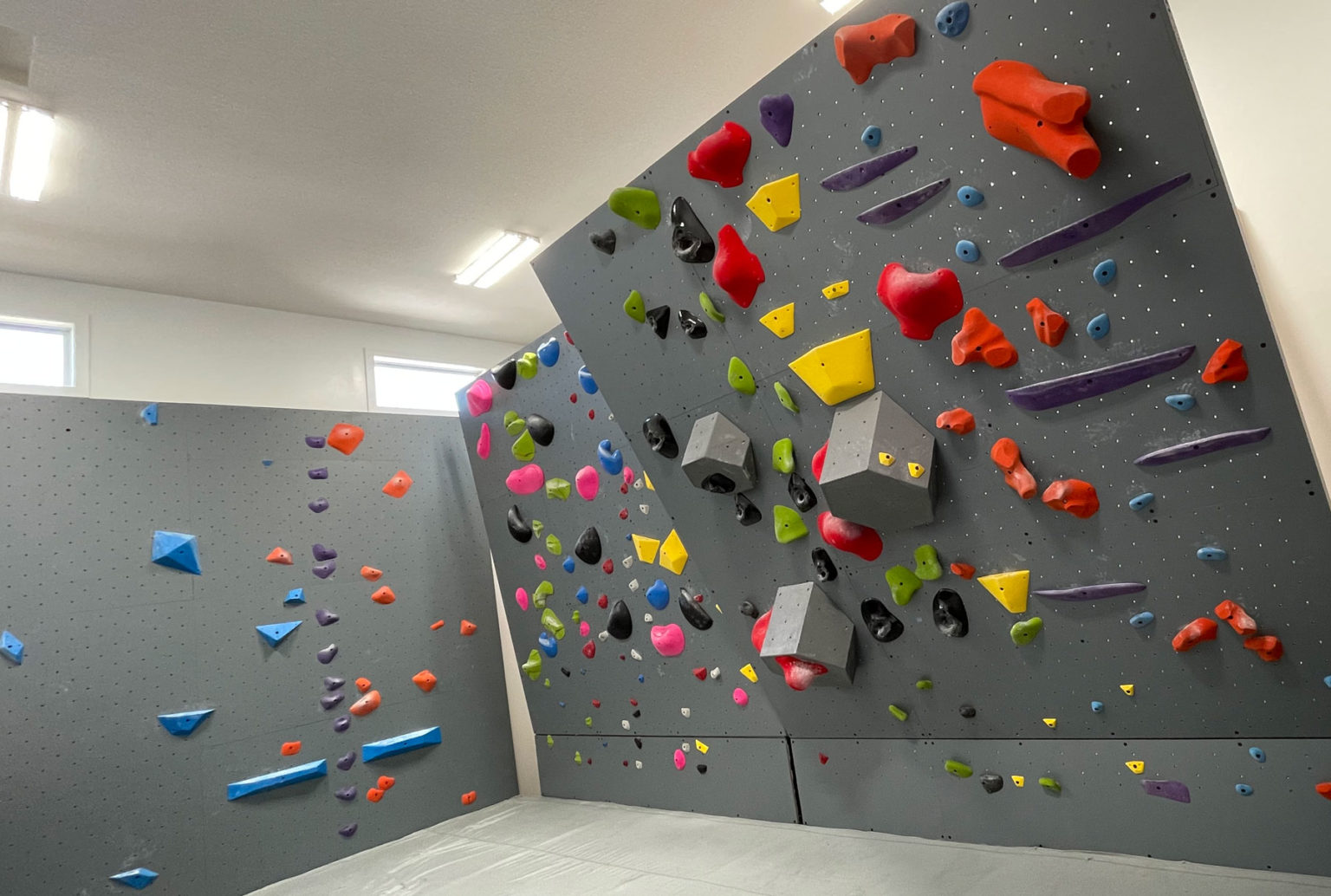
The only way to gain this setting skill is to do it. But where do you start? There are two main schools of thought about how to begin your route:
- Start at the beginning, that means the bottom or side of your wall. Attach the starting holds, both hands and feet. See how that positions your body, and envision the next move from there. Estimate where you will grab or step next, and attach those holds. Repeat the process until you’re at the end, one move at a time. Check out this fun video from Atomik that teaches this process.
- Start with a move and build the route outwards from there, back to a starting position, and forward to a finish. This is a more advanced setting technique, but don’t be afraid to try it.
Finish with a jug. It’s just nice to end on an easy hold; it lets you push hard on the last moves knowing a big hold is just ahead. Unless you’re prepping for competitions, leave the difficult finishes to athletes in comps, and take the lower-risk approach by finishing your routes on jugs.
Consistency is the goal for most homewall and commercial routesetting. Kenny notes to “adjust the holds and add in extra feet as needed so that you can accomplish a nice evenly flowing route with consistent difficulty.” As you master setting consistent and sustained routes, you can later set hard climbs with wild cruxes. But a nice flow is the place to start.
Consider who will be climbing on the route. If you are a solo homewaller, you may only need to accommodate yourself. But most homewalls are used by a variety of people and so the audience for your route will influence factors like hold selection and distance between holds. Intermediate holds―smaller, sometimes optional, holds placed between the primary holds―are a great way to even the playing field when routes need to be for both tall and short climbers.
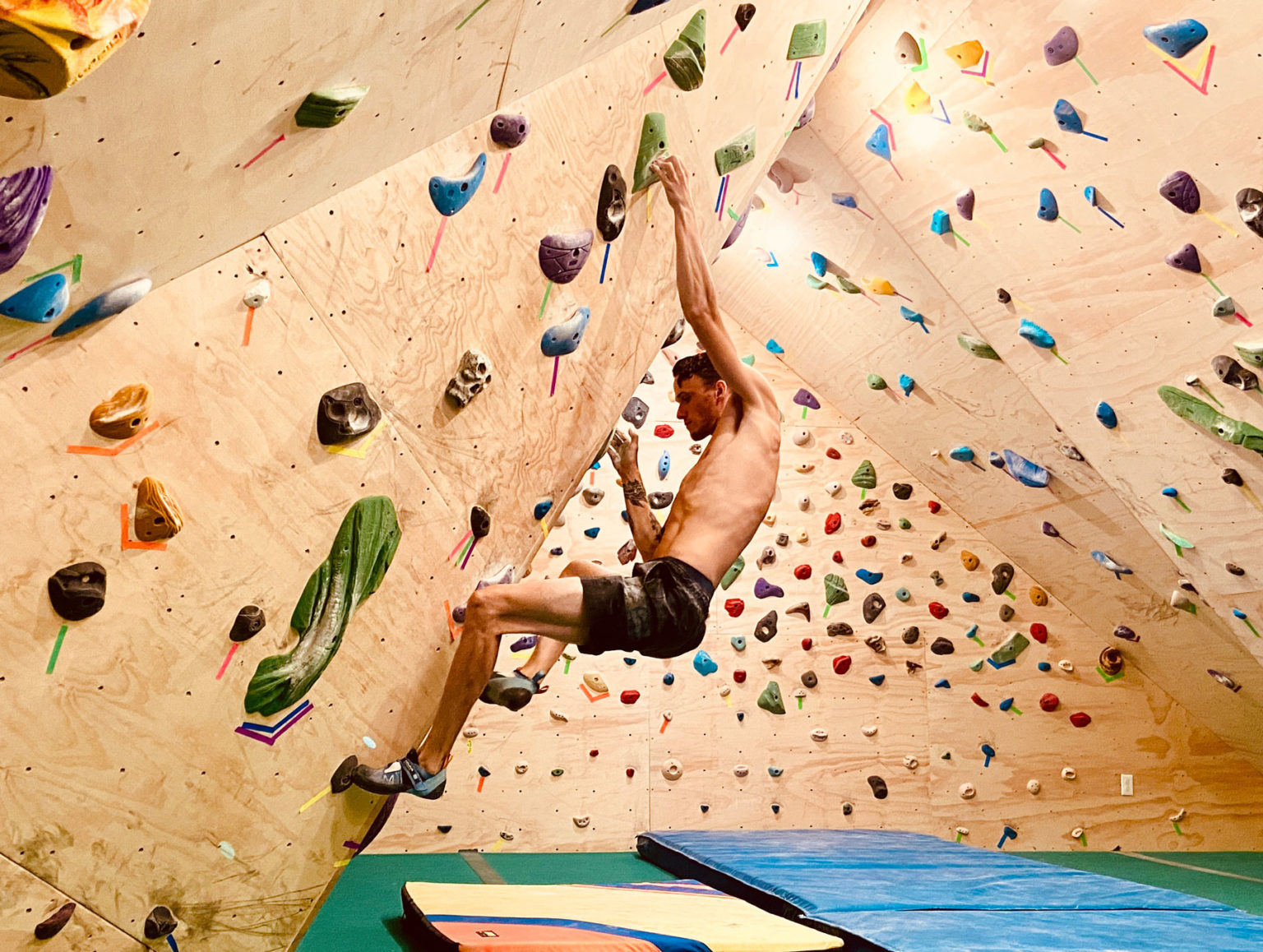
Forerunning is the process of testing and tweaking, and it’s the way good routes become great routes. Louie’s tip is to “be critical of yourself about why something works (or doesn’t) and try to learn from that for your next effort.” To set routes for different body types and sizes, invite friends over and see how they experience your creation. Beginning routesetters are often surprised when other people climb their routes in entirely different ways.
Turn holds to change difficulty. Sometimes you don’t need to move the hold; simply twisting it’s orientation to be more or less vertical will do the trick to give a consistent flow. Turning down-pulling holds into sidepulls or gastons also can prevent the hold from becoming a gigantic foothold later in the sequence.
Forcing moves and mimicking outdoor climbs is hard. These are advanced techniques that even highly experienced routesetters are challenged by. That doesn’t mean you shouldn’t try them, but go easy on yourself if it doesn’t work out. There is almost always someone who can “break” your beta, so don’t get frustrated; these are difficult routesetting skills to master.

Homewaller FAQ Team
We are fortunate to have the combined knowledge and experience of Louie Anderson (Legacy Ascension, Setter Showdown), Jackie Hueftle (Kilter Grips, Routesetting Institute), Kenny Matys (Atomik Holds) and Scott Rennak (CBJ, Reach Climbers). All four answer and review every question together.

Scott has been promoting indoor climbing since 1997 when he bought Climb Time of Cincinnati and started what would become the American Bouldering Series. Since then he has helped hundreds of small businesses grow including climbing gyms and manufacturers. Scott is the owner and publisher of CBJ, and is available for projects through Reach Climbers. In his free time he still scours nearby hills for fresh boulders, skis all year, and is a dedicated father.




